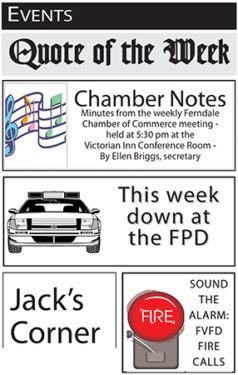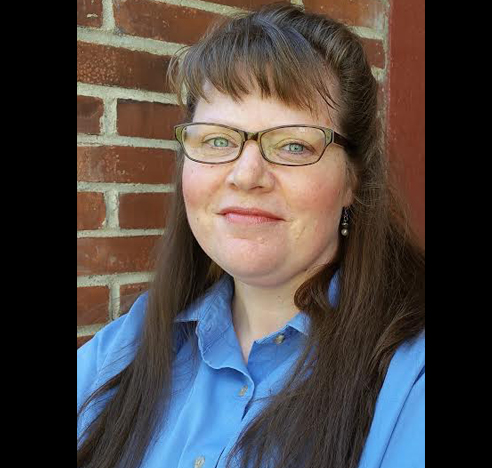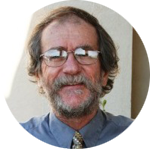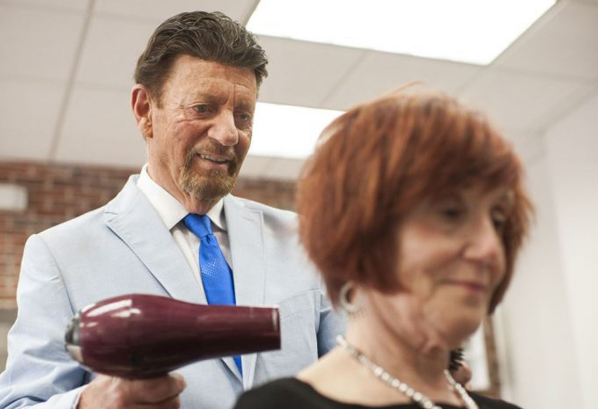
Ed Henninger
Design
ED HENNINGER is an independent newspaper consultant and the director of Henninger Consulting.
Website: www.henningerconsulting.com
Phone: (803) 327-3322
WANT A FREE evaluation of your newspaper’s design?
Just contact Ed: edh@henningerconsulting.com | (803) 327-3322
IF THIS COLUMN has been helpful, you might be interested in Ed’s books: “Henninger on Design” and “101 Henninger Helpful Hints.” With the help of Ed’s books, you’ll immediately have a better idea how to design for your readers. Find out more about “Henninger on Design” and “101 Henninger Helpful Hints” by visiting Ed’s website: www.henningerconsulting.com
When was the last time you gathered your staff and took a close look at your newspaper’s design?
- Is it working for your readers?
- Is it easy to produce on deadline?
- Is it contemporary?
- Is it compelling?
- Is it true to your design style?
I suggest a design critique every quarter … at least every six months. Go longer than that and you risk an erosion of your design style. Inconsistencies (see illustration) begin to creep in and, before long, your “design” is no longer a design. It’s just something that happens every issue.

When you do your critique, here are key items worth reviewing:
VISUALS
- Is there a dominant visual on Page 1 and other open pages?
- Are your photos/graphics large enough on the page?
- Are lead visuals placed over the optical center on open pages?
- Are they good quality?
- Are they properly (read that “tightly”) cropped?
- How’s your print/reproduction quality?
TYPOGRAPHY
- Are you using a strong, legible type face for text?
- Are word spacing and letter spacing too tight? Too loose?
- Are your columns too narrow for easy reading? Too wide?
- Is text aligned to the baseline grid?
- Are you watching for—and fixing—widows?
- Are you careful to avoid excessive word spacing and letter spacing in text wraps?
- Are your captions set large enough?
- Are your captions set too wide?
- Are your headline typefaces consistent?
- Do you avoid the use of funky fonts?
- Do you practice good headline hierarchy?
- Do you have a consistent text style for lists, such as police and fire runs, calendars and the like?
- Do you have a consistent text style for infoboxes, by-the-numbers boxes and the like?
- Do you have a consistent style for pullouts?
- Do you have a consistent style for drop caps?
- Are your typographic styles set up in your software style sheets?
OTHER
- Is placement of content consistent from issue to issue?
- Is placement of ads consistent from page to page?
- Does the design/typography of your nameplate need tweaking?
- Do your teasers do the job, or do they need updating?
- Are your design elements simple? Consistent?
- Do you use color carefully and with a purpose?
That’s my list. I’m assuming you have other items you’d want on your list, but those I’ve mentioned here will give you a good start.
NEXT MONTH: Now that you know what you’re looking at, who does the looking, how does it work … and who’s in charge?




 What is the key to creating an award-winning piece of photojournalism?
What is the key to creating an award-winning piece of photojournalism?












Survey: More Americans see less media bias — but why?
Gene Policinski
Inside the First Amendment
Gene Policinski is chief operating officer of the Newseum Institute. He can be reached at gpolicinski@newseum.org. Follow him on Twitter:
@genefac
Attention, you so-called “enemies of the people” and alleged purveyors of biased reporting: There’s reason to think fewer people than last year might see you that way, despite the ongoing, politicized attacks from multiple quarters on the news media’s credibility.
President Donald Trump hurled that “enemies” epithet at journalists some time ago, and continues to complain about biased news coverage nearly every time there are news accounts about contacts with Russian officials by his administration.
But such criticism comes with varying levels of vitriol from a variety of quarters, and started long before Trump took office. Often, the harshest criticism of the news media comes just as much from those who consume news as from those who make it. This year, however, there are signs that the public’s disdain for the press has somewhat abated.
The 2017 “State of the First Amendment” survey, released over the July 4 holiday by the First Amendment Center of the Newseum Institute in partnership with the Fors Marsh Group, found that:
There are some likely reasons for this shift: A significant amount of TV, online and print journalism has shifted from the softer “horse race” focus of the 2016 election to this year’s focus on hard news and complex issues.
And — with more than a bit of irony — as more Americans are inclined only to consume news from sources that line up with their individual perspectives, there’s a likely parallel increase in the “trust factor” in those sources, even if they resemble echo chambers more than truth-tellers.
Among those who believe that news media tries to report unbiased information, most expressed a preference for news information that aligns with their own views (60.7 percent). Those more critical of media efforts to report news without bias were also less prone to report a preference for news aligned with their own views (49.1 percent).
So, no celebratory back flips in the nation’s newsrooms, please, especially since the uptick only puts the “bias” figure roughly back to levels seen in 2013 and 2014 (46 percent and 41 percent, respectively).
Those inclined to support the work of today’s journalists hope that the drop in those who perceive press bias generally stems from that combination of dramatically increased visibility of news operations and their reporting on serious news, such as health care reform and investigations of Russian influence in the 2016 election.
For my part, I believe that more people saw reporting of real news, not fluffy “click-bait” features and dramatic but mostly meaningless polling reports, and it earned back some of their lost approval and trust. Here’s an idea for journalists nationwide: Keep trying hard news, accountability reporting on issues that — while not necessarily “sexy” — matter the most to people and their communities, such as jobs, health care, education, and local and state government.
For years, news industry moguls and newsroom leaders have sought ways to reverse their dwindling income, which has led to fewer newsrooms resources and less real journalism, and which in turn has prompted additional loss of consumers. Clearly, mushy stories about the travails of celebrities, feel-good stories, and valuing tweets over investigative reporting are not working out that well. Acting on that realization will mean putting an emphasis on innovation and finding new ways to report on subjects that, in themselves, don’t necessarily draw in a new generation of readers.
But therein is the opportunity for those who will be the news media success stories of the 21st century. This year’s survey results show that the opportunity is there, that news consumers are hungry for imaginative reporting on issues that directly impact their lives.
But we can still take comfort in the 20 percent drop in those who presume journalists are incapable of reporting without bias: Attitudes can change, and trust can be regained.
Editor’s Note: A version of this column appeared earlier on the Newseum Institute website as part of the 2017 State of the First Amendment report.